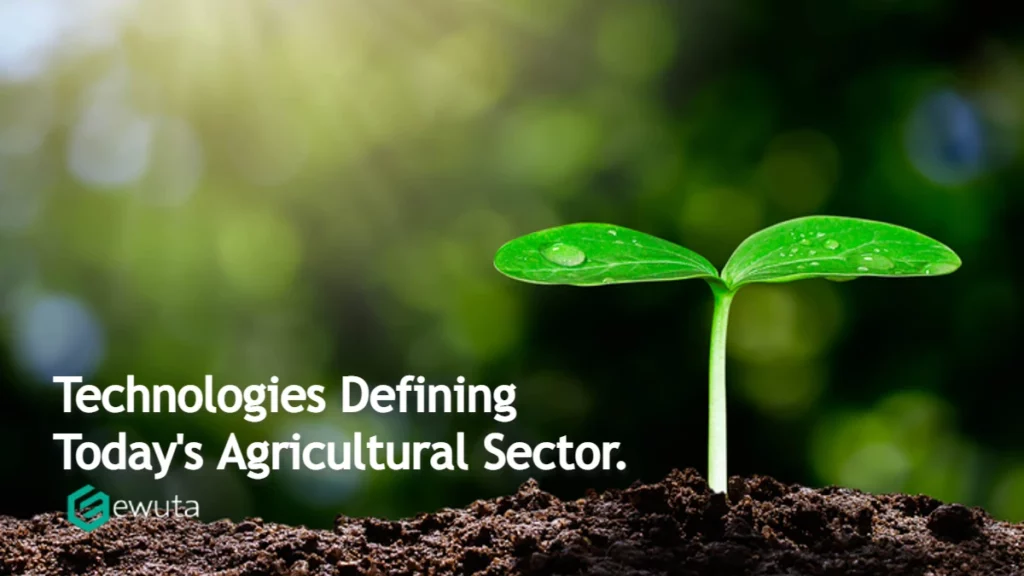Over the last century, the agricultural sector has come a long way in terms of technological advancements. As a result, experts have developed more practical, efficient, and innovative agricultural technology, opening the sector to new opportunities. However, at the same time, significant developments have shifted how farmers yield and tend crops.

Generally, innovative technology in agriculture has improved resource management, as researchers strive to implement creative tech to solve widespread industry issues. For example, many forward-thinking farmers utilize helpful gadgets to address crop and livestock management matters.
The increased demand for innovative agricultural technology drives investment in the sector. Though traditional farming methods and technologies remain, farmers increasingly turn to new technology to solve long-time problems. Read on for information on eight technological advancements making their mark in agriculture.
1. Erosion control and revegetation
Soil erosion control means preventing and controlling the washing away of natural soil. Erosion may happen through water, wind, and human activity, and when left untamed, may lead to decreased soil fertility. Fortunately, farmers can benefit from erosion control methods to improve crop yields and water retention.
Revegetation also focuses on maintaining long-term soil and land integrity. This process refers to rehabilitating degenerated land by replanting native vegetation and restoring the earth. Fortunately, technologies from providers like Granite Seed help with erosion control and revegetation, helping revitalize the soil and counteract harmful effects.
2. Precision agriculture
Precision agriculture uses technology to gather data on crops and soil to optimize inputs, including fertilizer and water. With precision agriculture, farmers can track moisture levels and crop growth changes, allowing owners to respond appropriately to reduce wastage.
Though popular for large crop farmers, many precision technologies are affordable for both small-scale and large-scale farmers. Between soil and water sensors, precision technology provides the benefits:
- Saves money
- Higher yields
- Improved soil health
- Better environmental impact
3. Pervasive automation
Pervasive automation refers to all technology used to limit operators’ workload, usually through automated technology. An example is an autonomous vehicle that optimizes seeding and fertilization, typically controlled through hyper precision or robotics.
Pervasive automation has risen in popularity over the past decade due to its delegation abilities, freeing up workers’ time to focus on more complex agricultural matters. As a result, farmers who implement pervasive automation into their day-to-day operations often see productivity boosts. Additionally, helpful software and apps allow farmers to oversee their farms, allocate funding, and shift outdated processes.
4. Automated irrigation control
Among all agricultural technologies aimed at enhancing efficiency, irrigation has the most significant advancements. Automated irrigation systems improve farm water supply while enhancing the quality and quantity of produce, making this innovative tech highly lucrative to farmers.
One of the highest-rated components of automated irrigation systems is their ability to supply water when necessary. Thus, mechanical irrigation systems help avoid waste and save money. In addition, automatic irrigation control is quite beneficial in regions that experience water shortages.
Ultimately, irrigation is an essential driver of success in agriculture, allowing farmers who use advancements in irrigation to reap huge rewards.
5. Remote tracking
In current times, remotely tracking crops using drones and satellites is gaining popularity. High-tech sensors allow farmers to check on fields from the comfort of their homes, enabling them to track and detect issues early on. That way, you can ensure correct fertilizer and water use, eliminating waste and overconsumption.
Additionally, remote tracking helps reduce the cost of labor while improving crop yields. Both small-scale and large-scale farmers can use remote monitoring, mainly because of affordable electronics. Generally, remote tracking helps improve decision-making by farmers on their farming practices.
6. Genetically modified crops
Genetically modified crops (GMOs) are plants whose genetic makeup includes modified traits. These modifications are beneficial to farmers and consumers, making GMOs a significant technological advancement in the agricultural industry.
Farmers growing particular crops —like fruits and flowers— reap significant benefits from genetic modification, including pest and disease resistance and improved nutritional value.
Additionally, GMOs reduce pesticide use. So, farmers can save money on pesticides while enjoying better yields. Though some consumers seek out non-GMO products, their benefits are revolutionary and backed by science, making them safe for consumption.
7. Minichromosomal technology
Minichromosomal technology comes in a tiny package, unlike most advanced agricultural technology. A minichromosome refers to a microscopic structure contained in a cell with minimal genetic material that provides significant data.
Experts can create unique crops through minichromosomes, adding specific traits to each species. However, the features that agricultural geneticists employ can be very complex, utilizing chemicals like nitrogen to mitigate drought tolerance.
For minichromosomal technology, the crop’s original chromosomes remain the same. Thus, consumers are more likely to accept them. Plus, the produce gets faster approval from regulatory bodies.
8. Weather monitoring
Despite misconceptions, weather monitoring is distinguishable from the standard weather report. Instead, weather monitoring uses sophisticated and computerized weather modeling to predict future climates. The technology provides farmers with adequate advanced notice of adverse conditions, including frost and hail.
With notice, farmers can take measures to protect their crops. Though it may be impossible to avoid losses entirely, farmers can prepare for the impact and reduce the losses they suffer.
Final words
21st-century technology has transformed every industry, and the agricultural sector is no exception. Ultimately, technological advancements help farmers produce quality yields faster and for less money. Using technology in agriculture will keep improving and gaining popularity in years to come.



